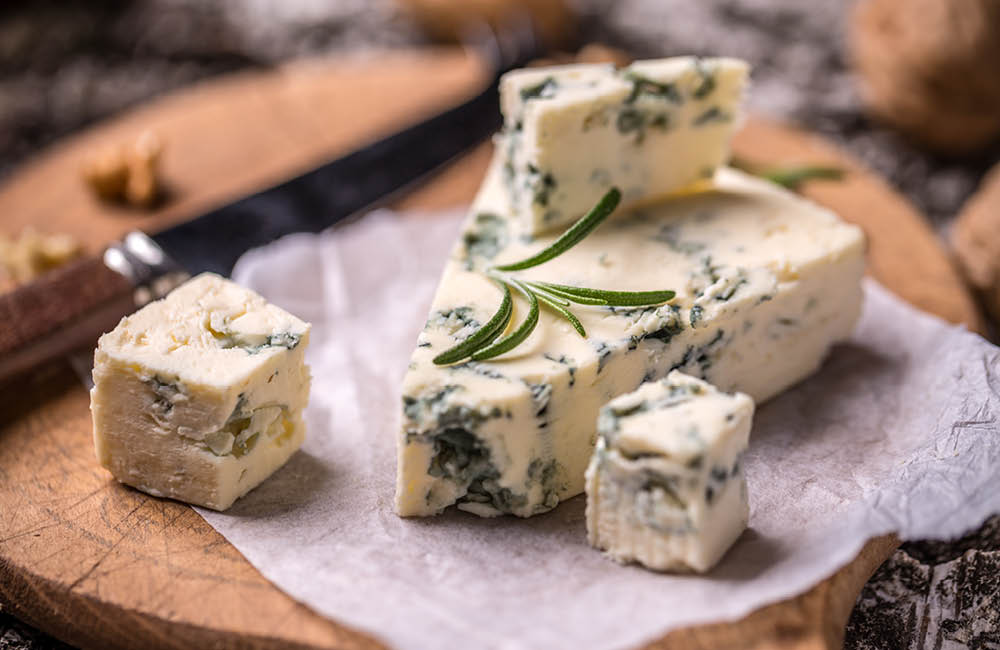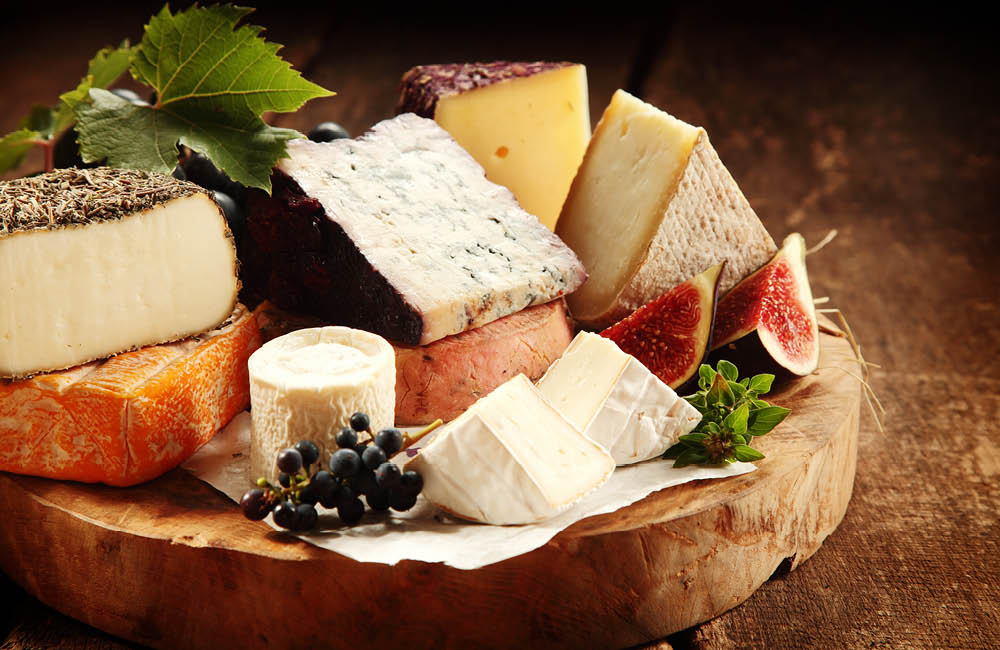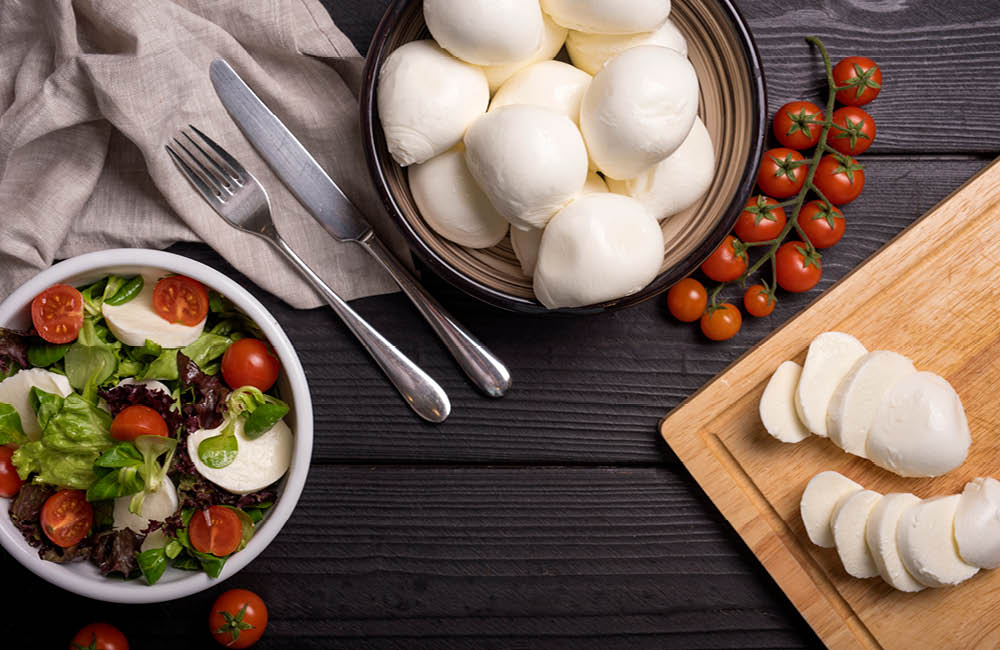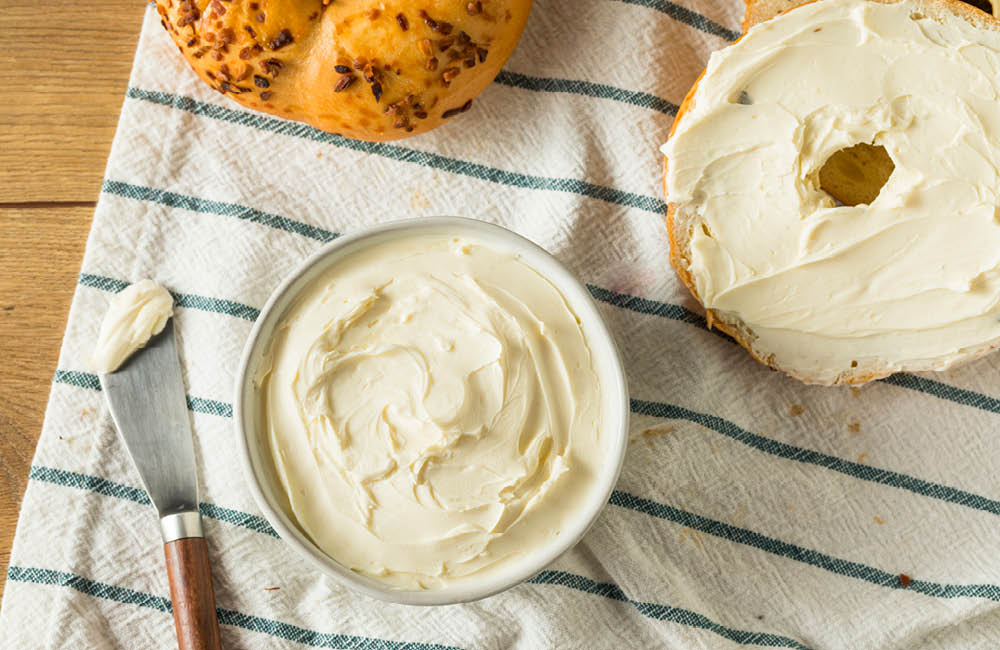It doesn’t matter if you’re a true cheese aficionado or a cheese newbie – after taking your first bite, you know that cheese is #bae. Whether you're craving Gouda, Swiss, or a creamy spread, your options are plenty. There are various cheese-making techniques, which have evolved with changing technology and consumer demand. There are also differences in the characteristics of different cheeses such as taste, colour, aroma, flavour, texture, softness, mould content, gas holes as well as their shelf life.
If you love eating cheese and can’t resist adding it to your food, say hallou(mi) to a few types of cheeses that you ought to know about.
Hard Cheese

Pressing, heating or further ripening fresh cheese results in a firmer, harder cheese. Hard cheeses have a lower moisture content than soft cheeses, are packed into moulds that undergo tons of pressure, and are usually aged longer than soft cheese. Hard cheeses are best served at room temperature, making them easier to cut and allowing their flavours to shine. Many of them can be enjoyed by themselves, but being firmer in texture and sharper in taste, they are great when grated for pasta, salads, soups, and more. These are some of the most common ones.
• Parmesan

A popular cow’s milk cheese, Parmesan has a hard, pale-golden rind, and sharp flavour. It is typically made in Argentina, Australia and the United States. Italy’s Parmigiano-Reggiano is aged longer, which gives it a sharper flavour and granular texture. Parmesan is often served freshly grated.
• Asiago

This northern Italian cow’s milk cheese is a milky, yet sharp cheese. Its smooth and sometimes crumbly texture makes it the perfect addition to bagels, pasta dishes, and cheese plates. Its flavour is more savoury, sharp, and tangy.
• Grana Padano

Grana Padano is another hard Italian cheese that is similar to Parmigiano-Reggiano. It’s aged between nine to 16 months and has many uses. If you want to get the best out of it, try pairing it with some lightly drizzled honey, or with dried fruits, slices of apples and figs. You can also enjoy it with other things for a quick snack or appetizer. Try some olives or even walnuts.
• Gorgonzola

Gorgonzola, referred to as ‘Italian blue cheese’, is firm, crumbly, salty, and it also has blue veining. The blue veining is what gives it an extra bite. Enjoy it with your usual pasta and salad. In Italy, it is used to top short pasta; long pasta (spaghetti) is usually avoided. If you’re a pizza lover, you can also top your pizza with Gorgonzola crumbs.
Semi-Hard Cheese

Having aged less than half a year, semi-hard cheeses are characterised by their relatively mild taste and aroma. This variety is often characterized by soft touches of hazelnuts and seared butter, along with assorted mellow tones. Semi-hard cheese melts and spreads evenly when grated, with firmer and slightly older cheeses guaranteeing neat slices every time. Often wearing a wax or cloth coating, semi-hard cheeses with natural rinds are edible all the way through, intensifying in flavour towards the exterior.
• Gruyère

Traditionally a cultured, raw cow’s milk cheese, Gruyère originated in Switzerland. It’s now made in several other countries and has been somewhat industrialised with the use of pasteurized milk. It has a salty, earthy, and nutty flavour, and contains granular, crystallized protein deposits. This cheese is often used for fondue.
• Cheddar

Hardly ever in need of introduction, this English treasure has become a permanent resident in global cuisine. It has a creamy, sharp flavour that depends on aging time – the longer aging period, the sharper the cheddar. Cheddar can be found with a diverse range of textures and tastes. Some are even mixed with chilli, black pepper and onion. It’s the perfect cheese for grilled cheese sandwiches.
• Swiss cheese

Swiss cheese is the perfect balance between nutty and sweet. The larger the holes in a wedge of Swiss cheese, the more distinct the flavour. Swiss cheese is great on burgers.
• Gouda

Gouda features a lightly beige-coloured body, and is made using milk from either sheep, cows or goats. It has a sweet and nutty flavour, often with a light and mild aroma. As it ages, flavours become more piquant and the texture crystallises. Pair with a slightly bitter beer or a deep red wine.
• Halloumi

Halloumi is a white cheese from Cyprus made of a blend of sheep and goats’ milk (sometimes with cows’ milk thrown in too). Like feta, halloumi is usually brined in a salty solution, giving it an unmistakably tangy taste. Its firm structure lends itself to cooking in large pieces for stand-alone eating, and its high melting point means it can hold up to grilling or frying without losing its shape.
Semi-Soft Cheese

This in-between category is home to cheeses that are soft but not gooey. Semi-soft cheese has a higher moisture content, generally between 36 per cent and 45 per cent, and undergo an average aging process. For this reason, semi-soft cheeses usually keep all the fresh milk flavours. The texture is firm - but not hard - and pliable, although it can vary from semi-firm to very firm.
• Mozzarella

Originally made from the milk of water buffalo, today, mozzarella is also made from cow’s milk. The fresh, milky flavour makes it the perfect pizza cheese, and perfect in a Caprese salad or sandwich.
• Manchego

This cheese is known for its traditional basket weave pattern that’s pressed on the rind. Depending on aging time, Manchego cheese can take on a variety of flavours, from fruity and tangy to caramel and nutty. Eat Manchego cheese with thinly sliced cold cuts, dates or apples to bring out its flavour.
• Muenster

Muenster is a smooth, moist cheese that varies in intensity, from mild to sharp. And because of its incredible melting properties, Muenster is perfect in mac ‘n cheese, burgers, and grilled cheese sandwiches.
Soft Cheese

Soft cheeses offer a highly rich and unique taste, flavour, and aroma to every cheese connoisseur out there. These are known for their amazingly mild taste and creamy, moist, and buttery textures that just seem to melt in the mouth. The biggest difference is that soft cheeses are usually not aged so they are able to retain all the moisture, unlike hard cheeses. It’s also important to note that soft cheeses need to be eaten within their assigned time periods (since they are not supposed to be aged), and eating them afterwards can increase your risk of salmonella poisoning. This is especially important to note for pregnant women.
• Cream Cheese

Cream cheese is a soft, mild-tasting cheese with a high-fat content. Because it is not naturally matured, cream cheese is supposed to be enjoyed fresh, used as frosting or baked into a cheesecake, which sets it apart from other soft cheeses. One can also make many different flavours of cream cheese, from basil to berry. For the savoury lovers, cream cheese can be used as stuffing in baked mushrooms and chicken.
• Ricotta

Ricotta is a fresh Italian cheese that is made from the whey leftover from sheep, cow, goat, or buffalo milk during the production of cheese. The sweet, fluffy cheese has a light consistency. Ricotta is a perfect addition to toast, pasta filling or classic desserts.
• Brie

This French cheese is beloved for its creamy, rich texture, and earthy flavour that makes everything taste better. It has a soft, bloomy, edible rind of white mould. Brie is traditionally made from cow's milk but can also be made from goat's milk. Brie is a welcome addition to a cheeseboard and is best enjoyed served at room temperature accompanied by fruit, nuts, baguette slices, and crackers. Brie also bakes well, either alone or wrapped in pastry; serve it with bread and fruit.
• Feta

Feta is a pickled curd cheese that has a salty and tangy taste enhanced by the brine solution. The texture, which can be extremely creamy, or crumbly dry, depends on the age. Upon maturation of two months, feta is sold in blocks submerged in the brine. The cheese can be used a table cheese or melted on a traditional Greek salad, spanakopita, pizza, or pie. It tastes delicious with olive oil, roasted red peppers, and nuts. Though feta is usually made from a combination of goat’s milk and sheep’s milk, many stores today sell both goat’s milk feta and sheep’s milk feta.